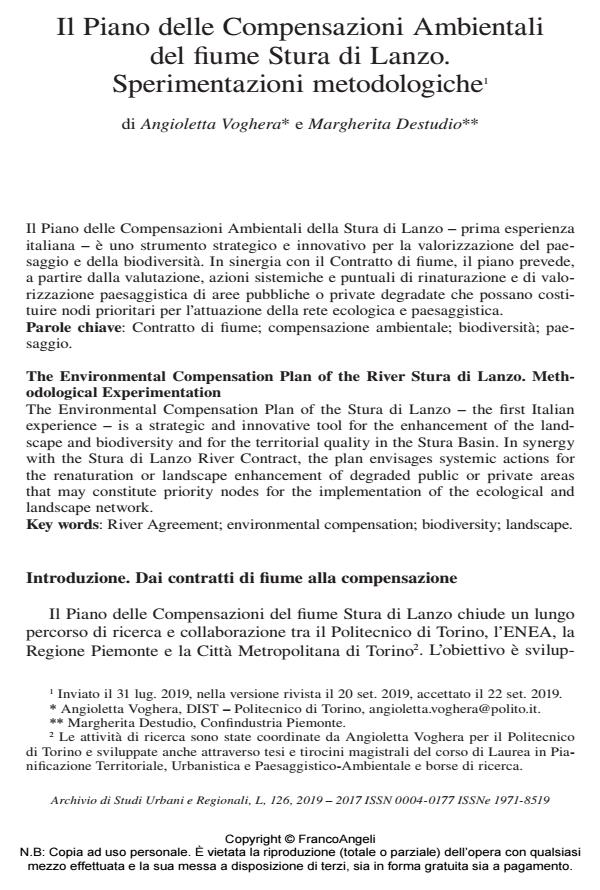The Environmental Compensation Plan of the River Stura di Lanzo. Methodological Experimentation
Journal title ARCHIVIO DI STUDI URBANI E REGIONALI
Author/s Angioletta Voghera, Margherita Destudio
Publishing Year 2019 Issue 2019/126
Language Italian Pages 23 P. 118-140 File size 340 KB
DOI 10.3280/ASUR2019-126007
DOI is like a bar code for intellectual property: to have more infomation
click here
Below, you can see the article first page
If you want to buy this article in PDF format, you can do it, following the instructions to buy download credits

FrancoAngeli is member of Publishers International Linking Association, Inc (PILA), a not-for-profit association which run the CrossRef service enabling links to and from online scholarly content.
The Environmental Compensation Plan of the Stura di Lanzo - the first Italian experience - is a strategic and innovative tool for the enhancement of the landscape and biodiversity and for the territorial quality in the Stura Basin. In synergy with the Stura di Lanzo River Contract, the plan envisages systemic actions for the renaturation or landscape enhancement of degraded public or private areas that may constitute priority nodes for the implementation of the ecological and landscape network.
Keywords: River Agreement; environmental compensation; biodiversity; landscape.
- Planning and Design Perspectives for Land Take Containment Benedetta Giudice, pp.111 (ISBN:978-3-030-91065-5)
Angioletta Voghera, Margherita Destudio, Il Piano delle Compensazioni Ambientali del fiume Stura di Lanzo. Sperimentazioni metodologiche in "ARCHIVIO DI STUDI URBANI E REGIONALI" 126/2019, pp 118-140, DOI: 10.3280/ASUR2019-126007